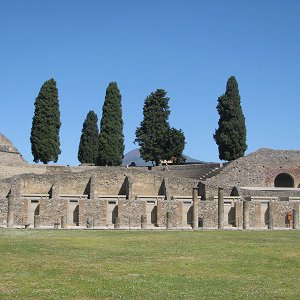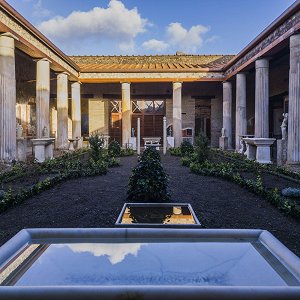
Embed Image

Embed Image
The Temple of Apollo is one of the oldest and most significant religious buildings in Pompeii, Italy. Dating largely from the 2nd century BC, the temple features a striking columned portico and fragments of an earlier version from the 6th century BC. One of its remarkable features is the statues of Apollo and Diana, depicted as archers, which stand on either side of the portico. The originals of these statues are housed in Naples' Museo Archeologico Nazionale. The Temple of Apollo holds historical importance as a site of ancient Roman religious practice and serves as a testament to the architectural style and engineering feats of that era.
In addition to its architectural significance, the Temple of Apollo holds cultural symbolism and local stories that add to its allure for tourists. The temple reflects the religious practices and rituals of ancient Pompeii, offering visitors a glimpse into the spiritual beliefs and customs of the time. Its historical background and ongoing excavations continue to provide valuable insights, allowing visitors to engage with Pompeii's rich history. Additionally, the temple's preservation efforts and restoration projects contribute to its significance as an archaeological site of interest.
Visitors to the Temple of Apollo can explore the site through guided tours or self-guided trails within the Pompeii ruins. The accessibility and safety considerations for visitors are important aspects to consider when planning a visit, ensuring that tourists can fully immerse themselves in the historical and cultural depth of the temple. With its historical significance, architectural marvels, and cultural relevance, the Temple of Apollo offers an enriching experience for tourists seeking to connect with the ancient Roman world and the heritage of Pompeii.




































